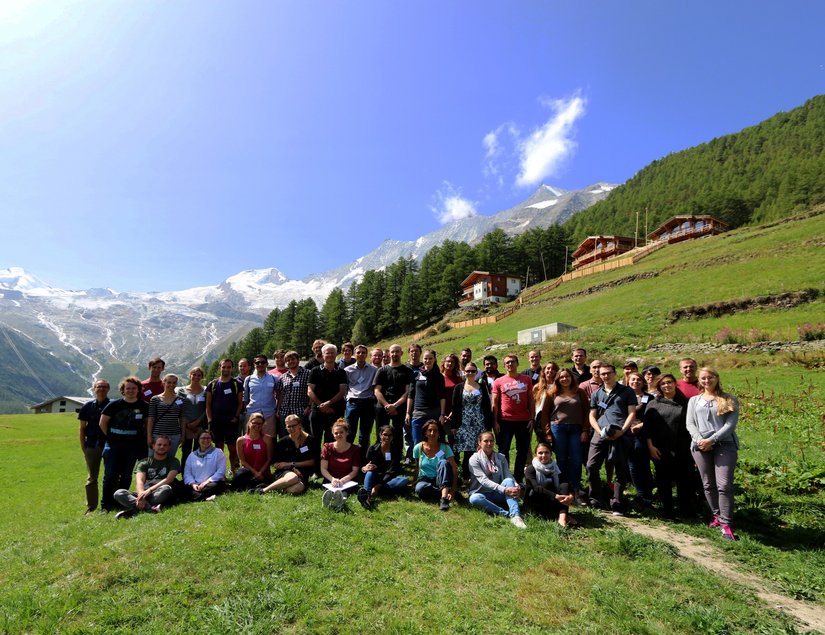RNA & RNP architecture: from structure to function to disease

From August 28th to September 1st 2017, the NCCR RNA & Disease held its second Summer School in the beautiful scenery of Saas-Fee in the heart of the Swiss Alps. The five-day Summer School "RNA & RNP architecture: from structure to function to disease" allowed students and postdoctoral researchers to expand their knowledge in the field of RNA structure and its importance in function and disease. Moreover, a one-day workshop dedicated to RNA techniques pro-vided the unique opportunity for participants to gain deep insights into the state of the art methodologies in the field. The Summer School also provided a platform for young scientists to discuss their research and exchange ideas with leading international experts and pioneers in the field and among each other. A stunning lineup of invited speakers gave the students and postdocs an excellent overview on the multifaceted topic of RNA structural biology and beyond. Topics of the lectures included structure-based discovery of RNA functions, an integrative view of interaction networks between mRNA, tRNA and rRNA, the power of combining structural approaches to solve structures of protein-RNA-complexes, the impact of high-throughput data in structure and interaction predictions, non-coding RNA pathways guided by mi-croRNAs and circular RNAs, circadian RNA biology, structural and functional insights into ribosomes, miscoding-induced stalling of substrate translocation on the ribosome, ribosome functions revealed by nucleotide analog interference, translational control in cancer, and mechanistics and biological functions of Nonsense-Mediated mRNA Decay. During the RNA techniques workshop the power, the area of applications as well as the limitations were presented in an interactive discussion for a variety of methods: Chemical tools in RNA research, Selective 2' Participants of the 2nd NCCR RNA & Disease Summer SchoolParticipants hiking on the Ibex Trail during the free afternoon on Wednesday. Larissa Grolimund und Norbert PolacekTHE NCCR RNA & DISEASE MESSENGER, No. 7, December 2017 82nd NCCR RNA & Disease Summer School Hydroxyl Acylation analyzed by Primer Extension (SHAPE), RNA live cell imaging, ribosome profiling, CRISPR-Cas genome editing, struc-ture determination of protein-RNA complexes using Mass-spectrometry, and Cryo Electron Microscopy. Furthermore, all participants were given the opportunity to train their presentation skills in short presentations or chalk talks. During the two-hour discussion rounds with the invited speakers, an ideal setting was provided for the participants to informally discuss science with distinguished scientists in the field. The organizers would like to thank all invited guests and participants for shaping a successful, stimulating and memorable Summer School!
By Larissa Grolimund und Norbert Polacek

Robert Schneider, Eric Westhof, Scott Blanchard, and Kevin Weeks (from top left to lower right).